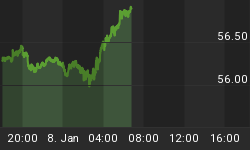The US Dollar drops to:
- 19-month lows against the euro at 1.31, down 2.5% on the month and 10.6% on the year
- 3 month lows against the yen at 115.62, down 1.1% on the month and 2.0% on the year.
- 23-month lows against sterling at 1.9348, down 1.4% on the month and 12.4% on the - year.
- 5-month lows against the Swiss franc at 1.2072, down 2.6% on the month and 8% on the year.
The dollar damage deteriorates in thin trading activity on a combination of the following:
-
Escalating optimism in Europe and inflation vigilance by the European Central Bank officials, particularly following Thursday's unexpectedly strong German IFO business climate survey matched a 15-year high in November at 106.8 from 105.3, overshooting expectations of a 105.2 reading. The survey not only increased speculation of further ECB rate hikes, but also dispelled speculation that the region's largest economy will be unfazed by next year's 3-point increase in the VAT tax. 5-month highs in French consumer confidence have also helped boost the euro.
-
Heavy unwinding of yen carry trade positions against the higher yielding currencies of the USD and AUD. As we have repeatedly warned before, the unwinding of USD/JPY carry trade positions particularly ensues as the Japanese yen -- largest currency provider of global capital reduces USD positions in anticipation of slower growth in the US, reduced risk appetite and anticipated reduction in stock market complacency seen through sub-10 levels in the VIX.
-
Comments from People's Bank of China warning about the risk to Asian currency reserves from further dollar slide, suggests that shifts from USD is already underway. The rise in the yen is also boosted by increased expectations that China will make more concrete decisions in its currency on reports that Fed Chairman Bernanke will join Treasury Secretary Paulson in a trip to China next month.
-
Talk of sovereign Mideast accounts buying euros is also accelerating the EURUSD rise, after the central bank of the United Arab Emirates and Qatar have long stated their intentions to shift towards EUR and gold in their currency reserves.
-
Increased expectations that the ensuing slowdown in the US will produce earlier than expected interest rate cuts in the US, with market odds of a March easing as high as 42%. Next week's array of US data increases the probability of not only increased evidence of slowing housing market but also dissipating inflationary pressures signaled through the October core PCE price index (expected down to 2.2% from 2.4%).
-
Gold prices have hit a fresh 21/2 month highs at 638.80 per ounce, breaching the 50% retracement of the major move from the May 2006 high of $730 per ounce to the June 2006 low of $549 per ounce.
The pace of the dollar downfall is highlighted by current losses in US stock futures, reflecting worries about foreign financing of the US trade deficit instead of producing the usual optimism fed on US exports. Japanese officials are unlikely to intervene today as the momentum in dollar selling has not yet receded.
The current euro rally/dollar sell-off may stabilize before end of the day but is unlikely to end in the short term as the fundamentals and market flows are increasingly stacked up against the US currency as clarified by the aforementioned factors -- which are seen long term in nature. Unlike in the EURUSD rallies of January 2004 and January 2005 when the ECB was NOT in a tightening cycle, today's euro rally is vitalized by current rate increases as well expectations of 50-bps of tightening in the next 4 months.
N. B. Our Wednesday (Nov 22) forecasting calls made on falling USDJPY and falling AUDEUR are on target based on the expected technical and fundamental calls made in favor of the euro and the Japanese yen. (see previous analysis with charts)
















